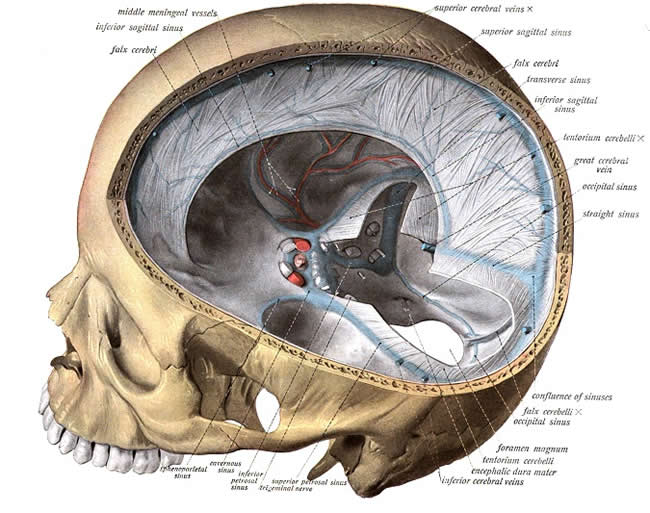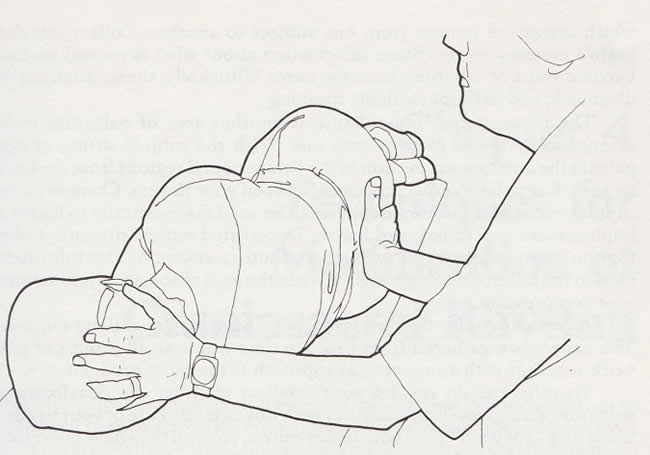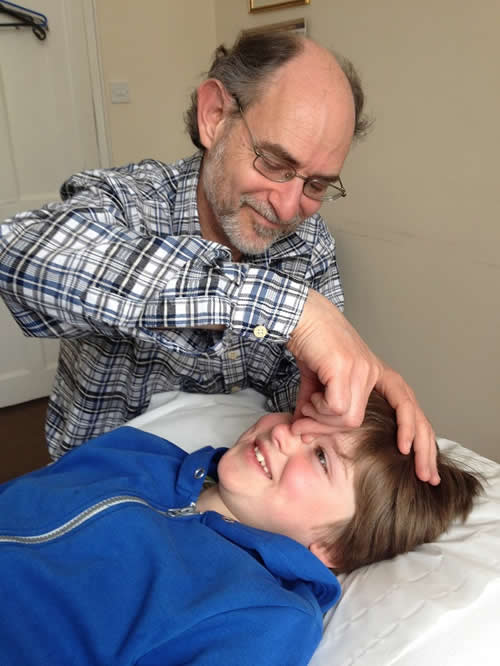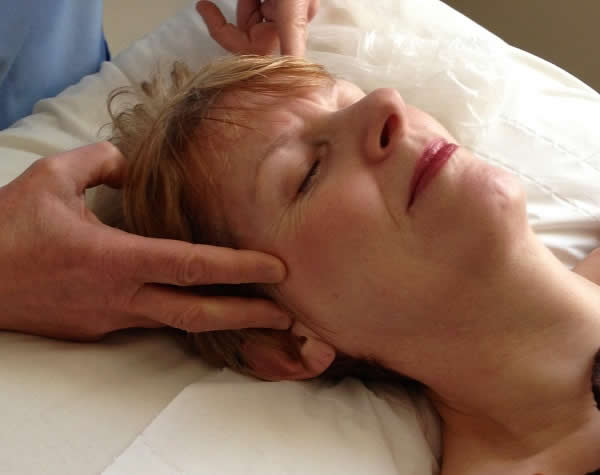Positive Health Online
Your Country

The Dural Membranes – Core of the Craniosacral System
by Jonathan Lawrence(more info)
listed in craniosacral therapy, originally published in issue 253 - April 2019
Craniosacral therapy works by helping the body to achieve a reboot of its homeostatic mechanisms via the rebalancing of structural imbalances. This is achieved through gentle palpation and manipulation. Whilst theoretically any structure can be the cause of dysfunction, certain anatomical elements have more of an impact when disturbed than others.
At the core of the craniosacral system are the membranes that surround the central nervous system (CNS).[1] The three-layered system is composed of the outer, Dura mater (literally ‘hard mother’) the Arachnoid mater and finally the Pia mater.
The Dura mater the outermost and mechanically the most important has pain receptors. The membrane system is vascularised by the meningeal arteries.
Dysfunction of the system can lead to inflammation characterised as meningitis. I suspect that there are many sub-clinical cases of this that go under the radar as I will explain later.
The anatomical significance of this structure is that it encloses the central nervous system and cerebrospinal fluid. It, therefore, protects this delicate and vital complex by being a mechanical barrier and shock absorber. It also has the vital function of transmitting nerves from the CNS to the peripheral nervous system.
What is not recognized in most textbooks is how it has an important role in the structural integrity of the body. It is intimately connected to the fascial web, which is increasingly understood to have vital structural and functional associations between the largest and smallest structures within the body down to the cytoskeleton and nuclear matrices.[2]
In addition, it attaches to the skeleton at key points in the cranium, the upper cervical spine and the sacrum at S2.
There are 2 layers in the cranium one lining the skull and the other lining the brain. These layers are joined together by a superior by membrane running anteriorly posteriorly from the ethmoid bone to the occipital bone and dipping into the space between the two cerebral hemispheres of the skull to the internal occipital protuberance. This is the falx cerebri. This then continues inferiorly forming a morphologically similar feature between the cerebellar hemispheres known as the falx cerebelli. Where the two falxes meet there arises a similar lateral feature that goes over the cerebellar hemispheres and attaches to the sphenoid bone. This is the tentorum cerebellum.

Fig 1. Reciprocal Tension Membrane (RTM) The arrangement of the Dura within the Cranium.
An anatomical illustration from Sobotta's Human Anatomy. 1908.
The falxes and the tentorum together comprise a structure that compartmentalises and protects the brain. The whole structure is known as the Reciprocal Tension Membrane (RTM).
The meninges are tough and firm but not rigid. They have sufficient tensile force to absorb external forces as the result of activity and trauma in doing so protection the vital CNS.
Central to Craniosacral therapy is palpating the rhythms of the flow of cerebrospinal fluid. This motion in the healthy organism is expressed by all the structures of the body. When disturbance occurs that motion is changed, it may become less or even prevented and the vector of motion may be changed. When this happens function is disturbed. This may manifest as pain or reduced range of movement for example. Even physiological disturbance may occur.
Correction is through gentle and specific manipulation. Correction occurs when the system goes into a still point where for a short period of time, often less than a second, motion ceases. Homeostatic adjustment occurs and the system then regains improved motion and improved function.

Fig 2 Showing an Effective Position for Dural Treatment. From Craniosacral Therapy by John Upledger[3]
The meninges can become dysfunctional for a number of reasons. The structure itself can become disturbed through direct trauma such as a difficult birth, a blow to the head or a whiplash. It can also suffer from infection creating inflammation. This condition is meningitis and potentially extremely serious because of the proximity of the central nervous system and probably that the blood supply is isolated.
Indirect trauma can come from medical procedures that create scar tissue, falls onto the base of the spine, dental procedures affecting the RTM through the cranial base or the temporal bones and TMJ for example.
Clinical presentations of these dysfunctions can manifest as headaches, neck pain, back pain, toothache. In addition, neurological symptoms can occur along the route of cranial or peripheral nerves.
Diagnosis involves the taking of a detailed and accurate case history and educated palpatory skills requiring the ability to feel how trauma or inflammation affects the system.
Here are some examples of how this knowledge can manifest in positive outcomes in treatment.
A fifty-seven year old woman presented with right-sided neck pain radiating to the right shoulder and down the upper arm into the lateral deltoid. She also experienced some upper back muscle discomfort and low backache intermittently. She had previously had treatment from an osteopath with only temporary relief.
On examination, the facet joints between C5 and 6 bilaterally were found to be moderately restricted and C6, 7 and T1 were impacted consistent with her work involving long periods of being seated at a desk. The lumbar spine exhibited a mild lordotic configuration.
As regards Craniosacral findings there was mild cranial base restriction with a small torsion through the RTM. The sacrum was restricted but the key finding was a fascial drag anteriorly along the mid to upper lumbar spine. This finding is consistent with a history of scarring around the dural tissue in that area. The patient was asked if she had had an epidural to which she replied in the affirmative, having had this for bother pregnancies.
The fascial drag was treated using craniosacral and a fascial positional release procedure. Following this, the low back became less uncomfortable and there was a noticeable loosening of the facets in the neck and a sense of lengthening throughout the whole spine. Three treatments were required to ease the discomfort significantly and although the dural issues were not the only factor in the presentation they were certainly a maintaining factor.
In babies and children, a traumatic birth often results in torsion of the cranial base. This is maintained by mechanical derangement, intra-osseous compressions such as with the sphenoid and shortening of aspects of the RTM such as often happens on one side of the tentorium cerebri. The tentorium attaches to the occiput, temporal bone and inserts into the sphenoid.

Fig 3 Treatment of the Superior Attachment of the Falx Cerebri.
A number of functional effects can occur which may take time to manifest. In my experience, recurrent unilateral ear infections are an indicator of this and in older children glue ear may be a manifestation. These are usually very responsive to treatment.
Chronic whiplash presentation is not uncommon. A 37-year-old man presented with headache, neck pain and tinnitus. This had been bothering him for a number of years and had only recently been aggravated following intensive sports including squash and football.
His history included a whiplash that occurred 14 years previously when whilst queuing in traffic his car was rear ended and pushed his vehicle into one in front. He ended up with moderate whiplash that entailed two months of significant discomfort before becoming low grade with a slight but noticeable loss of movement in the cervical spine. He was also left with some intermittent sub-occipital soreness sometimes accompanied by tension in the upper trapezius muscle bilaterally.
Examination revealed a loss of cervical curve with tenderness of the soft tissues at the level of C1, C2 and C5,C6 and C7, worse in the right. Examination of the cranial rhythm demonstrated compression of the occiput, a sheer between the occiput and C1 and a tautening of the tentorium on the right and a flaccidity of the tentorium on the left side.
This would appear to be consistent with the effects of the trauma from the whiplash. Whiplash would over stretch the dura contributing to the loss of C curve. The head would have hit the headrest sheering the occipital/atlas articulation and creating compression in the occiput and assuming that the forces on the system were not symmetrically experienced this would disturb the RTM creating the imbalanced tensions in the tentoria that were identified.

Fig 4 Treatment Position for Balancing the Tentorium Cerebelli.
Treatment was successfully competed over several months.
Patients who have experienced meningitis have similar distortions in the system and will generally respond extremely well to treatment. I have on a number of occasions picked up palpatory findings that suggest that the patient has had meningitis but in view of their history this had never been identified and may well have been a sub-clinical feature.[4]
It is important to note that this treatment, although extremely gentle and non-invasive should not be undertaken during the acute phase of any trauma.
There is no doubt in my mind that this membrane system that divides and connects the Central Nervous System the Peripheral Nervous system. Helps to cushion and protect our most vital and delicate components need to be looked after in the same way that we attend to other structures in order to maintain food function and good health.
References
- http://www.interactive-biology.com/6715/structure-and-function-of-the-cranial-meninges/
- Scarr, G. (2014). Biotensegrity. 1st ed. Pencaitland: Handspring Publishing.
- Upledger, J. (2001). Craniosacral therapy. Berkeley, Calif.: North Atlantic Books.
- https://www.healthline.com/health/meningitis
Comments:
-
No Article Comments available